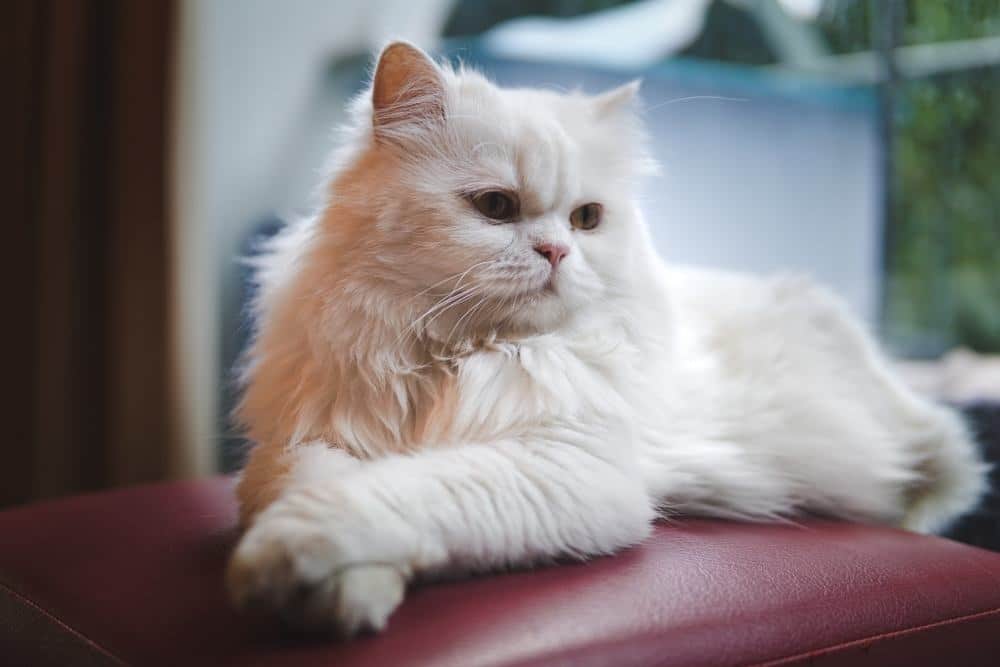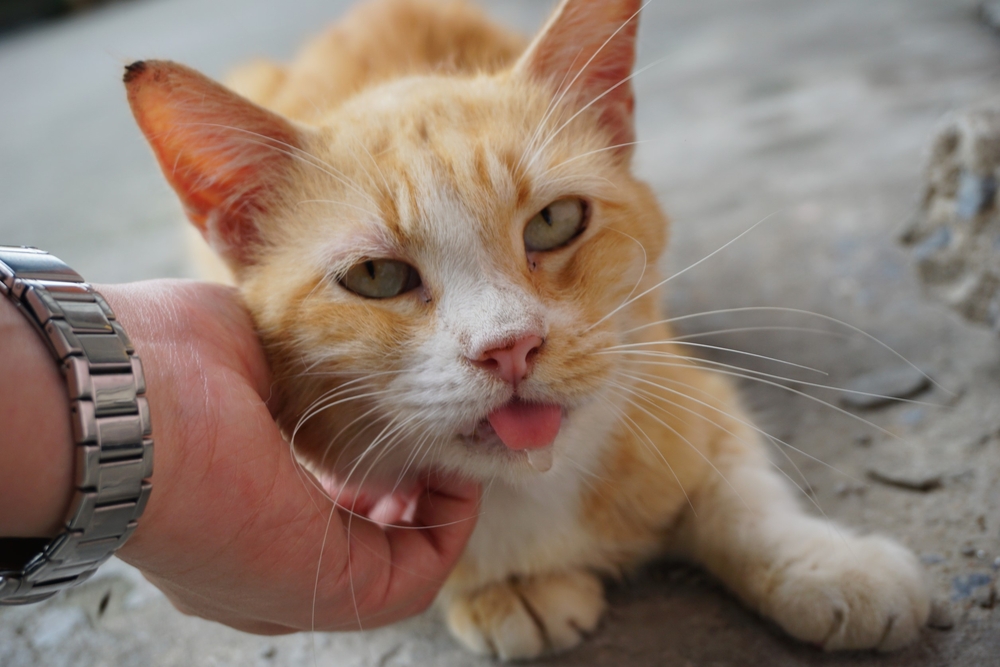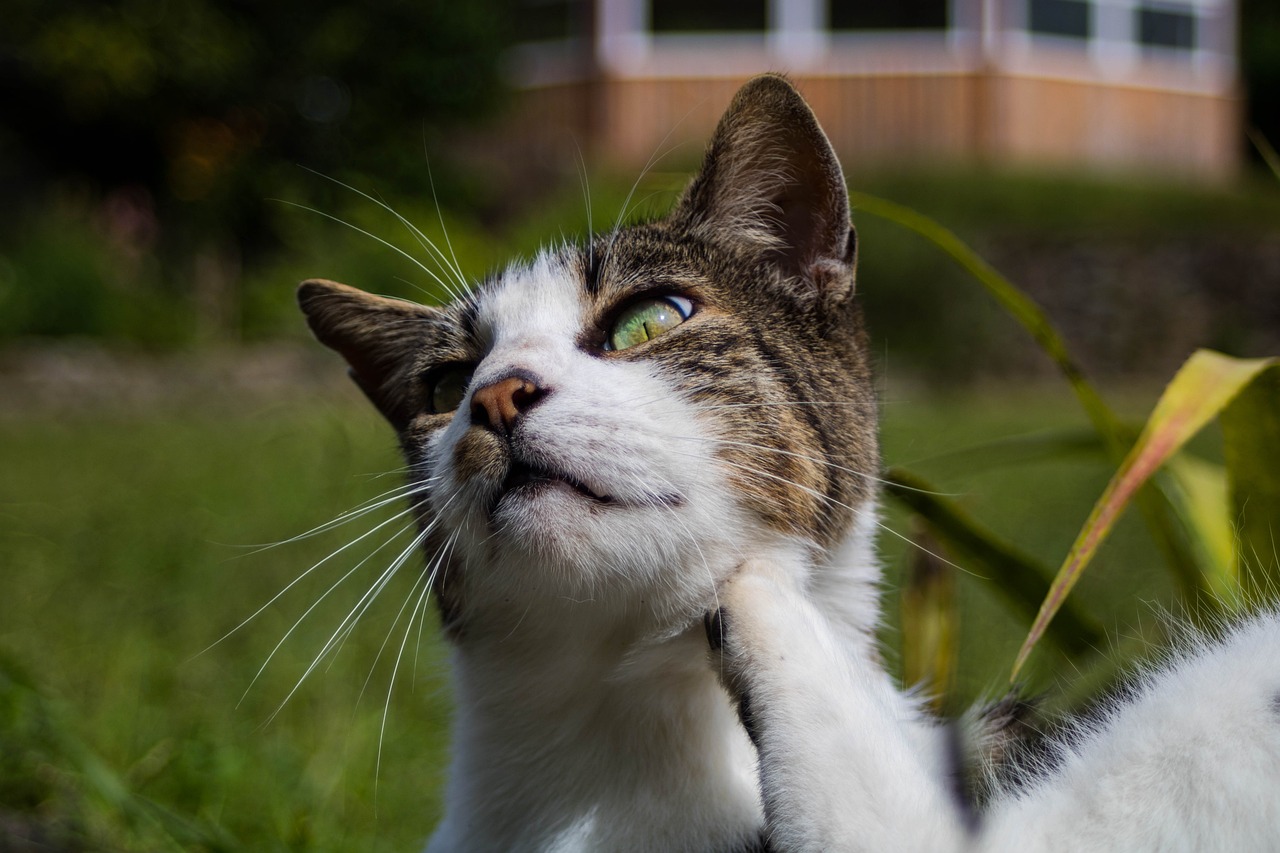Experienced cat owners know that no matter how much we bond and learn about our pets, there will always be at least one behavior that leaves us scratching our heads. Cats have all kinds of quirks from the amusing to the frustrating to the plain creepy, and if your cat is the type to stare at nothing, you know how scary it can be.
Cats don’t sense an invisible spirit when they look into the distance, but they often see something that we don’t. If this is a common occurrence in your home, we’ll explain five reasons why cats stare at nothing and when it should be cause for concern.


The 5 Reasons Cats Star at Nothing
1. They See, Smell, or Hear Something Nearby
Often, a cat that seems to be staring at nothing is actually alert to something that we are not noticing. As a natural predator, cats have highly focused senses to pick up small movements and faint traces of prey to aid them during the hunt.
Cats Have Sharper Senses
Cats have amazing hearing. They pick up frequencies up to 64,000 Hz (compared to our maximum of 20,000 Hz) and pick up noises from further away than humans can, picking up sounds we can’t hear.
Meanwhile, a superior nose allows cats to register smells up to 14 times better. With their keen eyesight, which some believe can process UV light, we can see that they have some way of sensing stimuli that pass right under our noses.
When cats stare intently at nothing, their keen senses can reveal something as small as an insect, a leaking pipe in the wall, or a flash of light. If you catch your cat staring intently in a random direction, watch his ear pinnae.
As they stare, their ears will orient in the direction of your cat’s gaze to help them localize the source of the sound, telling you they heard something you didn’t.

2. Cognitive Dysfunction
Cognitive dysfunction is a common occurrence as cats age. Most cats experience some form of cognitive decline past 11 years of age, with memory, awareness, learning ability, and sensory perception possibly gradually declining.
As cats experience the confusion that accompanies cognitive decline, they may look up at walls or into space, often exhibiting additional signs such as:
- There is no purpose in wandering in unfamiliar places
- Getting lost in familiar places
- Getting stuck around furniture and other obstacles
- Improper removal
- Lack of interest in play or interaction
- Decreased activity, eating, and grooming
- Increased anxiety and restlessness
- More vocalize at night
Your veterinarian can examine your pet to rule out other underlying causes of these behaviors. If they find that your cat is suffering from age-related cognitive decline, they can offer anti-anxiety medications and provide at-home tips to meet your pet’s changing needs and slow the effects.
3. Focal Seizures
Affecting approximately 1%–2% of the feline population, seizures occur when abnormal electrical activity in the brain causes a variety of physical effects, notably convulsions and twitching. Epilepsy is the repeated occurrence of seizures at least 24 hours apart.
Unlike generalized seizures that occur when both hemispheres of the brain are affected, a focal seizure refers to unusual activity in a specific region. Restricted or involuntary movements are often limited to one area, such as the face, with visible signs that vary depending on which part of the brain is affected.
Altered thinking can occur during a focal seizure, causing cats to go silent for nothing.
Additional signs may include:
- Excessive salivation or swallowing
- Facial twitches
- Lip smacking
- Dilated pupils
- Obsessive running
Cats may also flap their mouths in a behavior called fly-biting, with some flapping the air or becoming aggressive. In rare instances, episodes may progress to generalized seizures.

4. Petit Mal Seizures
Petit mal seizures, or absence seizures, are rare types of generalized seizures that usually show only minor, non-motor signs. Cats may not convulse but instead act disoriented, unresponsive, and unaware of their surroundings, often staring off into space for several seconds.
5. Hyperesthesia
Feline hyperesthesia syndrome (FHS), also called rolling skin disease or twitchy cat disease, is a condition that causes extreme sensitivity of the cat’s skin, mainly on the back. It is most common in younger cats and in certain Oriental breeds, including Abyssinian, Burmese, Persian, and Siamese.
Cats with FHS become more agitated when petted or touched and exhibit unique behaviors and signs, including:
- Aiming to stare, often at the tail
- Compulsive body repair and treatment
- Attacking others
- Tail-chasing
- Tail biting
- Eye movement
FHS can be associated with seizures in some cases, although it can also be a behavioral issue. Like seizures, FHS has many potential causes, from toxins to parasitic infections.
Veterinarians can perform comprehensive tests to rule out medical causes of FHS. They can issue medications, create unique diet plans, and provide guidance on environmental enrichment and new activities to ease your cat’s nerves.



What To Do If Your Cat Is Staring At Nothing
Cats can easily stare at what appears to be nothing, and this is rarely a cause for concern. They simply act on their drive for predation or self-preservation, notice a strange noise and focus on it to determine whether they should pursue, retreat, or do nothing.
Behavior can be problematic if your cat’s staring is stressful or includes signs of seizures, FHS, or cognitive decline. Although some causes, such as sporadic focal seizures, may not require treatment, frequent staring and additional signs of health problems should warrant a visit to the vet.
Stressful stimuli can also attract your cat’s attention. Investigate the source of their staring to determine if it is an isolated behavior, especially if your cat stares at the same spot at predictable points during the day. They may notice movements outside, changes in light, or sharp sounds that make them anxious. Sometimes, something as simple as closing the curtains is enough to bring them relief.


Conclusion
With their heightened senses and unique ways of thinking, cats almost seem to live in another world entirely. While we may think they’re staring at nothing, we probably don’t appreciate the minute distractions that put them on alert.
Health issues may come into play on rare occasions, but more often than not, this behavior is just one of the many fun quirks that make life with pets so much better.
Featured Image Credit: Jilin Su, Shutterstock


